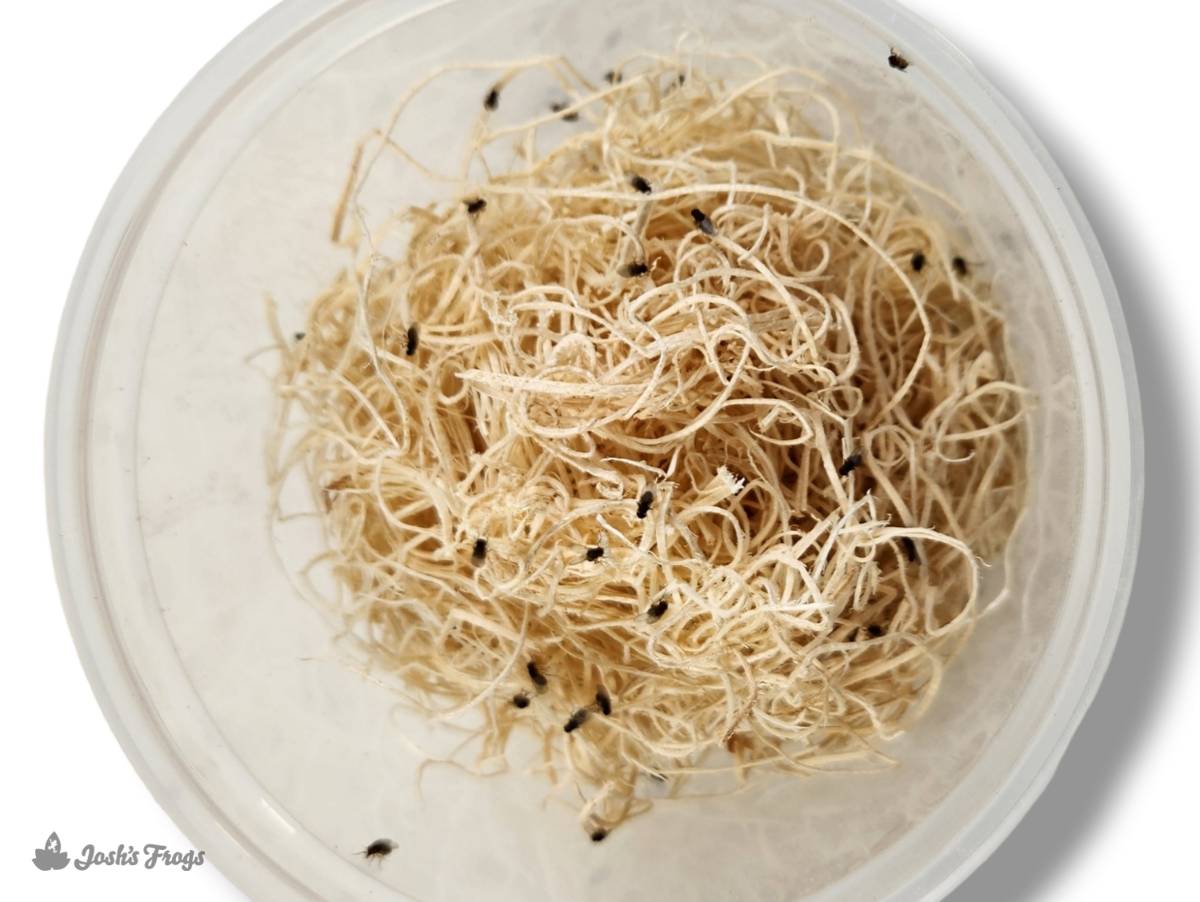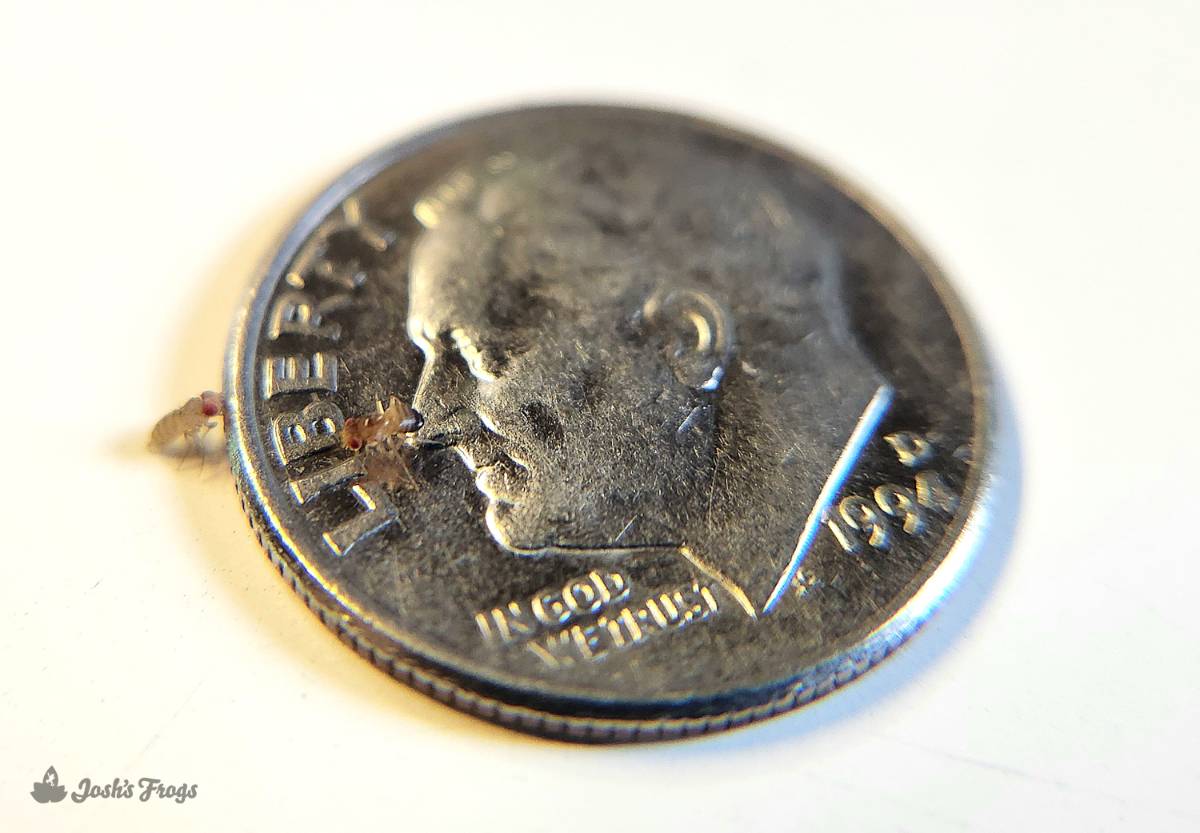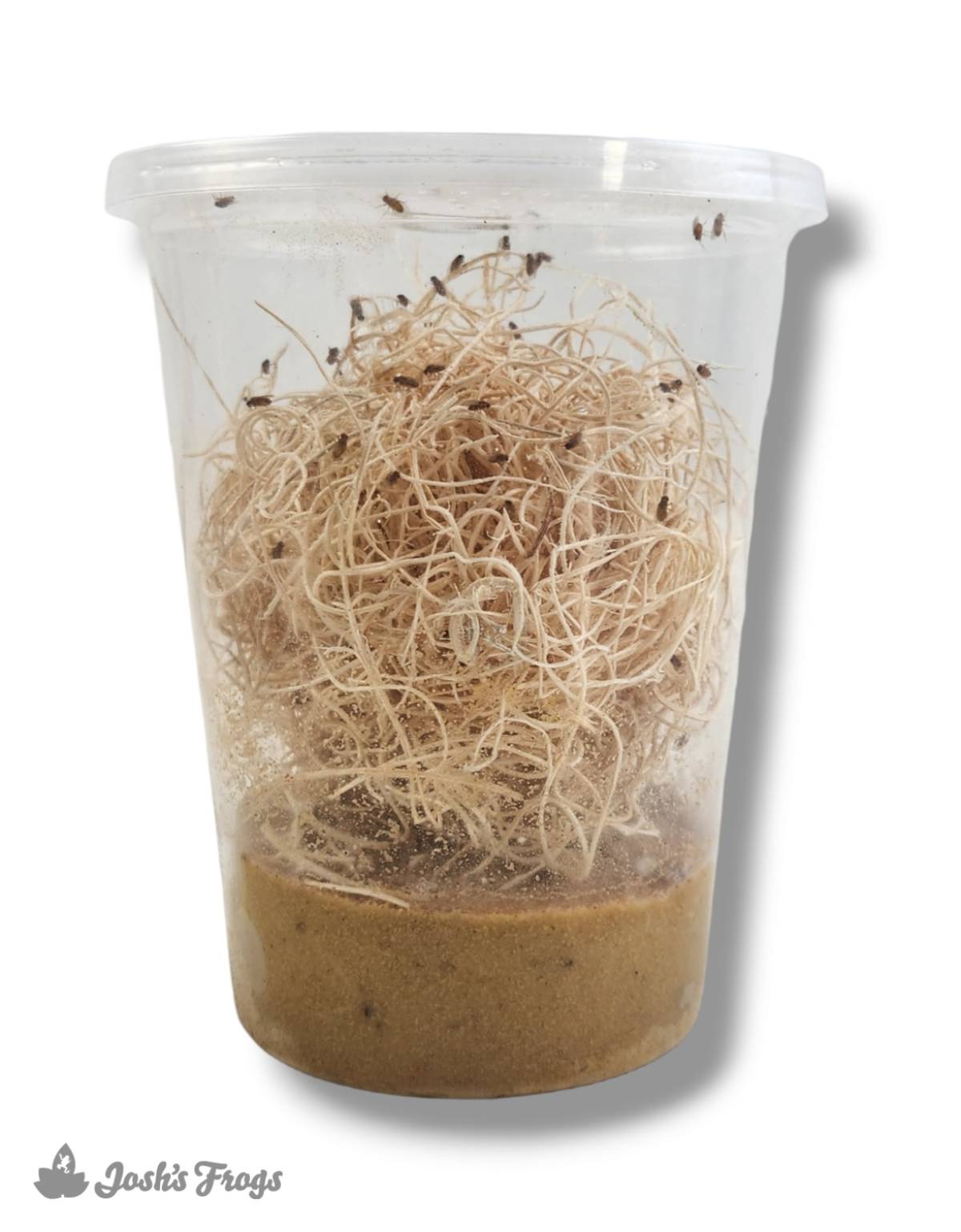Josh's Frogs
Which Fruit Fly is Right for Me?
A Comparison of Drosophila melanogaster and D. hydei
Fruit flies (Drosophila sp.) are a common feeder insect for animals that require small prey items, such as dart frogs. Although several different species have made the rounds in the hobby, 2 have consistently been cultured over the years, and remain the most common and easy to work with.

Fruit flies are easy to culture, making them one of the most popular feeder insects for animals requiring small prey items.
Drosophila melanogaster
Drosophila melanogaster (also know as melanogaster, melanos, or mels) are probably the most commonly encountered species of fruit fly in culture, and measure about 1/16 of an inch long, making them the ideal staple food item for a variety of dart frogs and other animals that prefer smaller prey items.
Melanogaster fruit flies have been used for years in genetics experiments around the world, and for this reason, there are several different genetic mutations of them available. Perhaps the most useful to the average hobbyist is the 'wingless' form. These flies lack wings, and as such are unable to fly. Unlike the 'flightless' D. melanogaster, the wingless form cannot regain the ability to fly if it gets too warm (the 'flightless' deformation is linked to protein folding–if the flies reach a certain temperature, the proteins fold properly and the next generation will be able to fly).
The 'wingless' trait is recessive–both parents have to carry the trait in order for the offspring to remain wingless. If a 'wild type' fly (one with wings) mates with a 'wingless' fly, the offspring will have wings and be able to fly.

Drosophila melanogaster are a smaller fruit fly, measuring about 1/16” long.
The life cycle of Drosophila melanogaster is very quick. Within 14 days of setting up a new culture, the next generation of flies is emerging. After that 14-day waiting period, new flies emerge every day. This quick generation time means that the culture will produce thousands of flies, fairly consistently, from days 14-28, at which time the culture should be disposed of. Because of this, melanogaster fruit flies are generally preferred by those who are new to culturing fruit flies–melanogaster tend to be more forgiving and easier to culture consistently.

Melanogaster fruit fly cultures will produce thousands of flies over a 28 day period.
Drosophila hydei
Drosophila hydei (also known simply as hydei) are another commonly encountered fruit fly in the hobby. Hydei measure about 1/8 of an inch, and are quite a bit larger and 'meatier' than D. melanogaster–perfectly suited for dart frogs that prefer larger prey items, or other pets with similar needs.
A 'flightless' form of hydei is most commonly available – this strain will not revert back to fliers at a higher temperature, unlike 'flightless' melanogaster. Like the 'wingless' form of melanogaster, this trait is recessive, requiring both parents to carry the trait in order for the offspring to be flightless. Every care should be taken to insure that flying Drosophila hydei do not get into the culture, as the resulting flying insects can quickly become a nuisance.

Drosophila hydei are a larger fruit fly, measuring about 1/8” long.
Compared to that of D. melanogaster, the life cycle of D. hydei is much longer. At average temperatures, it will take 21 days or more until the first new hydei being emerging in a culture. Hydei fruit fly cultures show a particular "boom and bust" cycle–the culture will appear empty, only to suddenly be filled with flies overnight. Most cultures will have 2-3 booms, with 5-7 days between each one. With the large period of time between active booms, hydei cultures are much more likely to dry out than melanogaster, and as such are more prone to crashes and grain mite infestations. 
Drosophila hydei fruit fly cultures are more prone to drying out and crashing, due to their 'boom and bust' life cycle.
Conclusion
Both popular species of feeder fruit flies are relatively easy to culture. Generally speaking, Drosophila melanogaster (the smaller fruit fly) is easier to culture for novices, and is perfectly suited for most species of dart frogs. Drosophila hydei (the larger fruit fly) will produce more 'meat' over the life of the culture, but is more susceptible to crashes.
